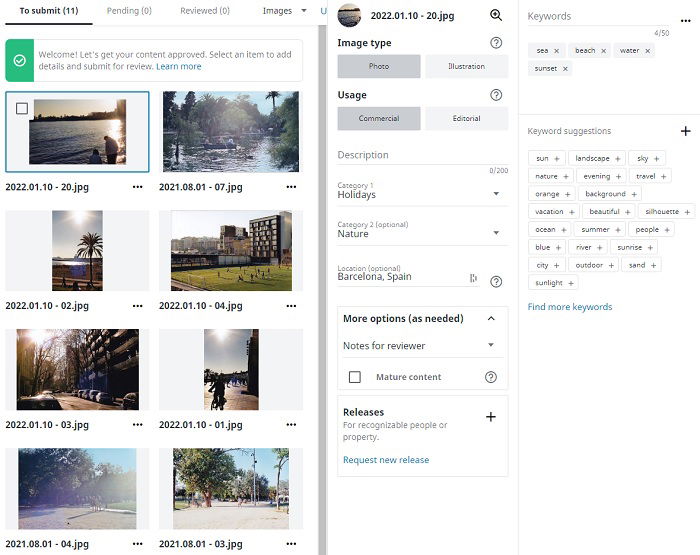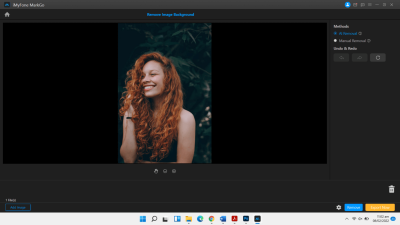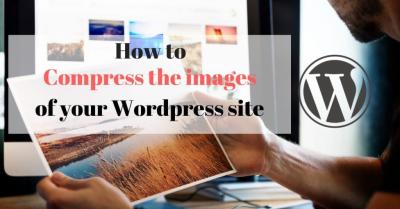If you’re browsing Shutterstock, you’re probably familiar with its vast library of high-quality images, videos, and music. But what many might not realize is that Shutterstock isn’t just a marketplace for stock content—it’s also home to a vibrant community of talented artists and creators. These artists often contribute original work, and some are open to custom projects. Knowing how
Shutterstock‘s platform is built around licensing content from a diverse group of contributors worldwide. These contributors range from professional photographers and illustrators to graphic designers and digital artists. While most content is available for licensing, some artists also offer custom work or commissions through the platform. Engaging directly with an artist can be a fantastic way to get exactly what you need—whether it’s a personalized illustration, a bespoke logo, or a unique piece of digital art.
One key thing to keep in mind is that Shutterstock has policies in place to protect both creators and clients. Artists set their own terms for custom work, including pricing, timelines, and usage rights. Many artists are eager to collaborate on projects that allow them to showcase their creativity and expand their portfolio. However, not everyone is available for custom work, so it’s essential to understand how to identify those who are open to such collaborations.
To get started, explore the artist profiles, review their portfolios, and pay attention to any mentions of custom services or contact information. Some artists list their availability for commissions directly on their profile, while others might prefer to communicate through Shutterstock’s messaging system. Building a good relationship and clear communication can make all the difference in ensuring your project turns out just as you envision.
Steps to Find the Right Artist for Your Custom Project

Finding the perfect artist for your custom project on Shutterstock might seem daunting at first, but with a few simple steps, you can streamline the process and connect with someone who truly understands your vision. Here’s a friendly, step-by-step guide to help you get started:
- Define Your Project Needs: Before diving into searches, clarify what you want. Is it an illustration, a logo, a digital painting? What style do you prefer? What are your timeline and budget? Having clear answers will help you communicate effectively.
- Use Shutterstock’s Search and Filter Tools: Start by searching for relevant keywords related to your project. Use filters like “Illustration,” “Vector,” or specific styles to narrow down options. Look for artists whose portfolios align with your aesthetic preferences.
- Review Artist Profiles Carefully: Click on promising profiles and examine their portfolios. Check their previous work, read descriptions, and see if they mention custom commissions or offer contact info. Pay attention to their experience level, style consistency, and client reviews.
- Look for Indications of Custom Services: Not all artists advertise their availability for custom work, but some do. Look for phrases like “Available for commissions,” “Custom illustration services,” or contact details listed in their profile.
- Reach Out with a Clear & Friendly Message: Once you find an artist whose style matches your vision, send a polite message. Introduce yourself, describe your project briefly, ask if they’re available, and inquire about their process, pricing, and timeline. Be specific but respectful of their time.
- Discuss Details & Negotiate: If the artist responds positively, discuss the scope, deadlines, revisions, and payment terms. Clear communication helps prevent misunderstandings and sets the stage for a successful collaboration.
- Confirm & Proceed: After agreeing on all details, confirm everything in writing. Some artists might prefer to formalize the agreement through Shutterstock’s messaging system or via email, depending on their preferences.
Remember, patience and politeness go a long way. Building a good rapport with your chosen artist can lead to a fantastic piece of custom work that exceeds your expectations. Happy hunting!
How to Reach Out to Shutterstock Artists Effectively
Connecting with Shutterstock artists might seem a bit intimidating at first, but it’s actually pretty straightforward once you know the best way to approach them. Remember, these artists are often busy creating fantastic work, so being respectful and clear in your message can make all the difference.
First things first, always ensure you’re reaching out through the right channels. Shutterstock typically provides a messaging system within their platform, which is the most direct and professional way to contact artists. Avoid sending unsolicited emails or messages outside the platform unless the artist has shared their contact info publicly or explicitly invited inquiries.
When you’re ready to reach out, keep these tips in mind:
- Be concise and specific: Clearly state what you’re looking for. Instead of a vague “Can you do a custom illustration?”, try “I’m interested in a custom vector illustration of a mountain landscape with a sunset.”
- Personalize your message: Mention the artist’s work that you admire or find inspiring. This shows you’ve taken the time to review their portfolio and genuinely appreciate their style.
- Respect their time: Keep your initial message brief. If they’re interested, they’ll ask for more details or provide a quote.
- Be polite and professional: Use courteous language, and thank them for considering your request.
Here’s an example of a good initial message:
Hello [Artist’s Name],
I recently came across your portfolio on Shutterstock and loved your vibrant style, especially the [specific piece].
I’m interested in commissioning a custom illustration of [your idea]. Could you let me know if you’re available and provide an estimate for this project?
Thanks so much for your time!
Best regards,
[Your Name]
Remember, patience is key. Not all artists respond immediately, and some may have busy schedules. Give them a reasonable amount of time to reply, and don’t be discouraged if you don’t hear back right away.
Tips for Communicating Your Custom Work Requirements Clearly
Once an artist shows interest, the next step is making sure your vision is communicated as clearly as possible. Clear communication helps avoid misunderstandings, reduces revisions, and ensures you get exactly what you want.
Here are some practical tips to help you articulate your needs effectively:
- Prepare a detailed brief: Write down everything about your project. Include the style, color palette, mood, specific elements, and any references you have. The more detail you provide, the better the artist can understand your vision.
- Use visual references: Share images, sketches, or links to artworks that capture the style or elements you want. Visual cues can bridge language gaps and give the artist a clearer idea of your expectations.
- Define the scope and deliverables: Clarify what you need—whether it’s a single image, multiple versions, or different formats. Mention the dimensions, resolution, and any other technical specifics.
- Set a deadline: Be upfront about your timeline. If you need the work by a certain date, communicate this early to see if it’s feasible.
- Discuss revisions upfront: Let the artist know how many revisions are included and how you’d like to handle changes. This way, everyone’s on the same page from the start.
Here’s an example of how to communicate your requirements clearly:
Hi [Artist’s Name],
Thank you for your willingness to work on this project. I’d like to create a vibrant, cheerful illustration of a picnic scene in a park, inspired by the style of [reference artist/style].
Specifically, I’d love to include children playing, a picnic blanket with food, and some trees in the background. The color palette should be bright and lively, focusing on yellows, greens, and blues.
The final image should be 2000x1500 pixels, suitable for print, with high resolution (300 dpi). I’d need the finished artwork by [date], and I’d appreciate up to 2 rounds of revisions if needed.
Please let me know if you need any more details or references. Looking forward to working together!
Best,
[Your Name]
By being thorough and clear from the start, you’ll help ensure that the artist can deliver a final product that matches your expectations—and that the process goes smoothly for both of you.
Handling Pricing and Payment for Custom Artwork
When it comes to commissioning custom artwork from Shutterstock artists, one of the most important aspects to get right is pricing and payment. It can sometimes feel a bit daunting, especially if you’re new to working with artists online. But don’t worry—clarity and transparency are your best friends here.
First things first, always discuss the pricing upfront. Every artist has their own rates based on their experience, the complexity of the work, and how much time they’ll need. Some artists prefer to offer a flat fee for the entire project, while others might charge hourly. Here’s a quick tip:
- Be specific about what you need—deadlines, style, number of revisions, and scope—so the artist can give you an accurate quote.
- Ask if the price includes rights and usage—this is crucial if you plan to use the artwork commercially.
- Clarify payment methods—PayPal, bank transfer, or other platforms—and check whether they require a deposit upfront.
Many Shutterstock artists will request a deposit before starting work—commonly 50%—with the balance due upon completion. This protects both parties and ensures commitment. Once the work is done and you’re happy with it, you’ll settle the remaining payment.
It’s also wise to get everything in writing—whether through email or a formal contract—outlining the agreed price, delivery timeline, revisions, and rights. This way, both you and the artist are on the same page and avoid misunderstandings.
Remember, fair compensation is key. Artists put a lot of effort into their craft, and respecting their rates fosters good relationships. If you’re ever unsure about the pricing, don’t hesitate to ask for a breakdown or negotiate politely. Most artists appreciate transparency and will be happy to discuss options with you.
Finally, once payment is settled, make sure you receive a receipt or invoice for your records. This not only keeps things professional but also helps if you need proof of purchase later on.
Best Practices for Ensuring a Successful Collaboration with Shutterstock Artists
Working with artists on Shutterstock can be a fantastic experience, especially when you follow some simple best practices. Clear communication, respect, and professionalism go a long way in making sure your project turns out just the way you envision.
Here are some tried-and-true tips for a smooth collaboration:
1. Be Clear and Detailed from the Start
Share as much information as possible about your project—style references, color preferences, intended use, and deadlines. The more details you provide upfront, the better the artist can tailor their work to meet your expectations. Consider providing sketches, mood boards, or sample images if you have them.
2. Maintain Open and Respectful Communication
Respond promptly to messages, and be polite even if you need revisions or adjustments. Remember, artists appreciate constructive feedback rather than vague critiques. If something isn’t working, explain why and suggest specific changes.
3. Set Realistic Expectations and Deadlines
Give artists enough time to do quality work. Rushing can compromise the final result. If you have a tight deadline, discuss it early on and see if they can accommodate. Sometimes, a little flexibility can lead to a better outcome.
4. Respect Copyright and Usage Rights
Always clarify what rights you are purchasing—are you getting exclusive rights, or is it a license? Do you need the artwork for commercial purposes? Understanding this helps avoid legal issues later.
5. Be Professional and Courteous
Approach your collaboration like a business partnership. Respect the artist’s time and expertise, and express appreciation for their work. Building a positive relationship can lead to more successful projects in the future.
6. Provide Feedback and Pay Promptly
Once the work is delivered, review it carefully and communicate any final adjustments quickly. When everything is settled, make your payment promptly. Artists value timely compensation, and it keeps the workflow smooth.
By following these best practices, you’ll foster a productive, respectful, and enjoyable working relationship with Shutterstock artists. The result? Beautiful, custom artwork that perfectly fits your needs—and a collaboration experience that’s as smooth as possible!


